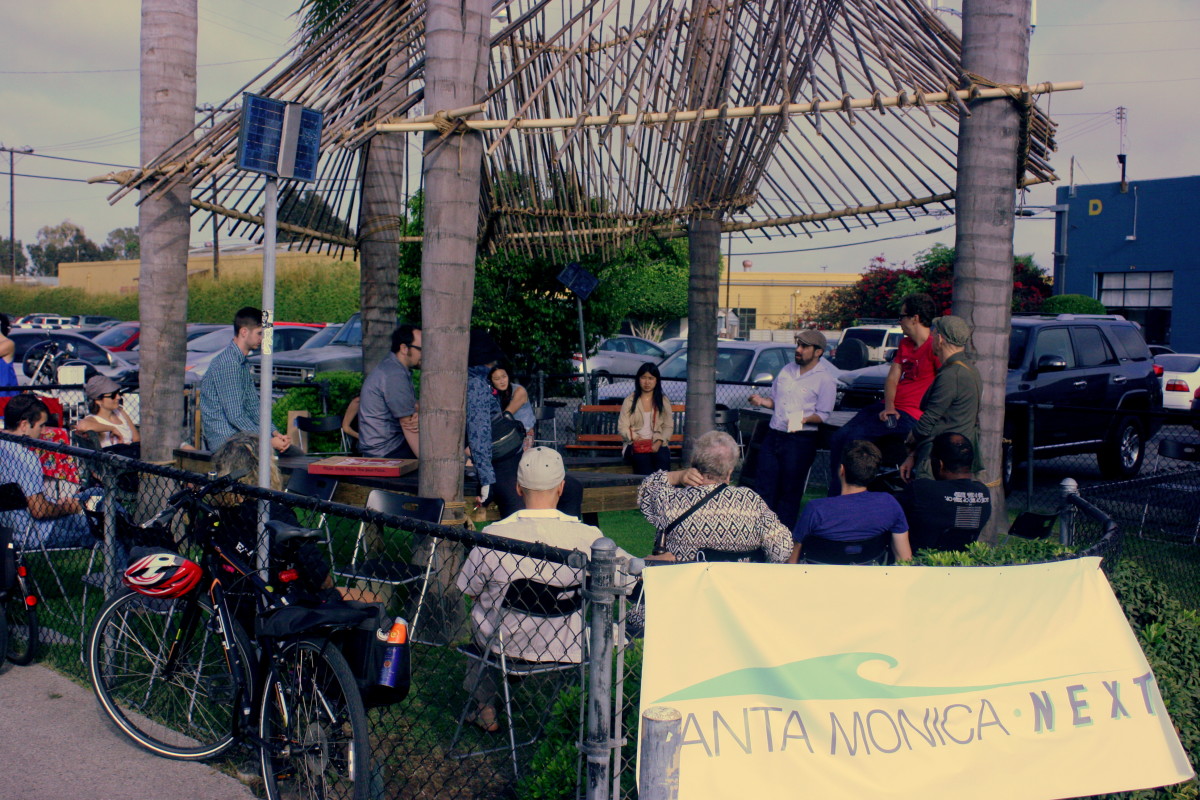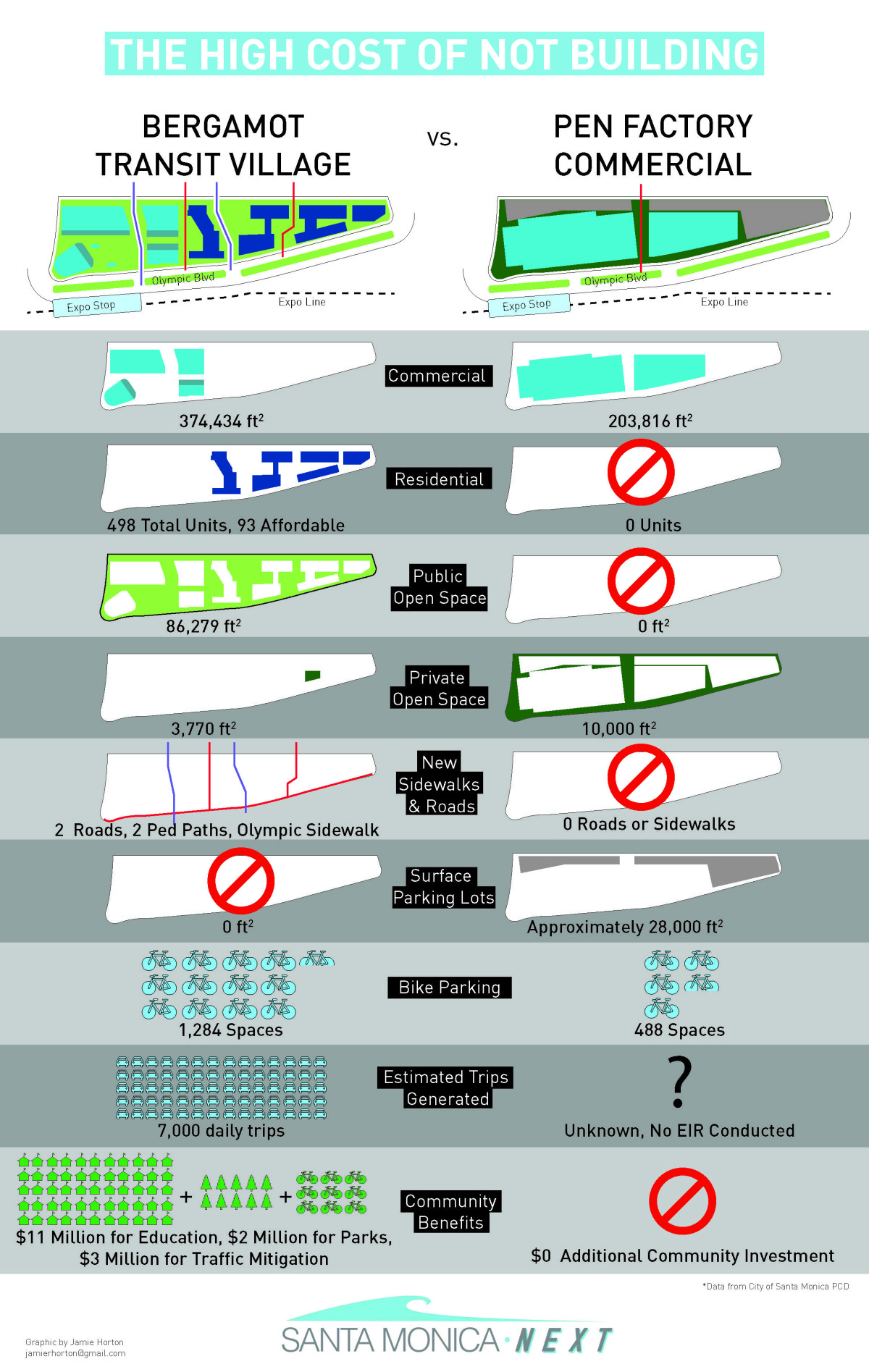Following the pleas of struggling art gallery owners in the Bergamot Art District, the City Council voted unanimously to create an “economic support program” (Council Agenda, Item 16D) to help businesses in the short- and medium-term. Many of these businesses point to downturns caused by the COVID-19 pandemic as the reason for their struggles, but it’s been less than a decade since the last time the city started a long-term planning process to insure these art galleries survive.
“These are small local businesses, many of them have been struggling since COVID,” stated Oscar de la Torre, who co-authored the motion with Councilmember Jesse Zwick. “They are trying to recuperate.”
But despite unanimous support on the dais for supporting these institutions and passing the motion, there seemed a lack of faith that the proposed program would do much for the long-term health of the district.
For one thing, as Councilmember Gleam Davis noted, the city promised the state it would build over 700 units of affordable housing on the property as part of its Housing Element and there’s no mention of housing in the passed motion.
For another, as noted above, the city already subsidizes these galleries by keeping their rent low.
About half of the land on-site was purchased by the city in the 1980’s to be a rail yard for the future Expo Line (now the present E Line). Metro came up with alternate plans for the yard, and the city has used the rent from the tenants to help fund the Big Blue Bus, which has some of the lowest fares in the county. But keeping the rents low to support the arts community is a factor when determining the amount of service, and the cost of fares, for the transit agency.
“There does not appear to be a sustainable financial structure in place at Bergamot, period,” stated Councilmember Carolyn Torosis. “If we are throwing money at the problem, are we throwing good money after bad business models?…It would be good to have not just a band-aid solution but also to have a strategic plan.”

Torosis, along with Zwick, urged the city to create a long-term planning process for the area. The city conducted such a process from 2015-2017 that was designed to provide for the long-term health of the Arts Center. But large portions of the final proposal, which included construction of a hotel that would have helped both with subsidization for the galleries and provide more patrons of the arts to have access to the center; were cut from the city’s final plan.
Some gallery owners even described the proposal as “the destruction of the Bergamot Arts Center,” a notion that was called “Fake News” by the committee that oversaw the creation of the plan. That committee included Arts Commissioner Phil Brock, who is now Mayor Brock.
You can read the official reports about the plan that was watered down/pushed aside (depending on your point of view), and the benefits that were lost, here.
Amazingly, the 2017 revitalization plan isn’t the only missed opportunity to see to the District’s long-term health.
For starters, the city has an ongoing missed opportunity as eight years after the opening of the Expo Line, there has been almost no planning (and even less construction) of transit-oriented housing. If done with an eye towards supporting the center, it could have produced hundreds or thousands of repeat visitors to the Arts Center.
The second is the city’s short sighted decision a decade ago to develop an office park instead of a mixed-use transit oriented housing project across the street from the site. The debate saw Santa Monicans for Renters Rights (SMRR) join no-growth groups in getting a measure put on the ballot that would have overturned the City Council’s approval of the plan. The council opted to just kill the plan itself rather than go through the ballot battle.
An infographic developed for Next at the time lays out the cost of that decision. Instead of increased access to the Arts Center from the north, a bicycle and pedestrian grid, hundreds of potential patrons being located next door, millions of dollars in revenue that would subsidize education, parks and transportation, and so much public green space it would basically be a public park; the city got an office park.

In both instances of the city turning its back on plans in 2014 and 2017, the majority of gallery owners were vocal in their opposition to these plans.
The motion passed last night didn’t just order staff to create a program to support the struggling arts centers, it also provided options including:
- Investing in tenant improvements to create smaller spaces that are more affordable in an effort to attract new tenants and retain existing tenants;
- Allocating additional City funding to help reduce property management fees that are currently borne by the tenants;
- Helping tenants access technical assistance to support business operations, and,
- Consider limited economic supports based on demonstrated need for tenants that receive technical assistance to support and sustain business operations.
Despite the above-mentioned concerns about the program’s long-term impact and the city’s failure to find ways to support the Arts District last decade, the Council was unanimous in support for the district.
“The Bergamot Arts Station has been an important part of Santa Monica,” de la Torre said while urging the Council to support the motion. “Bergamot supports a lot of up and coming artists that are not yet getting into the big galleries.”
